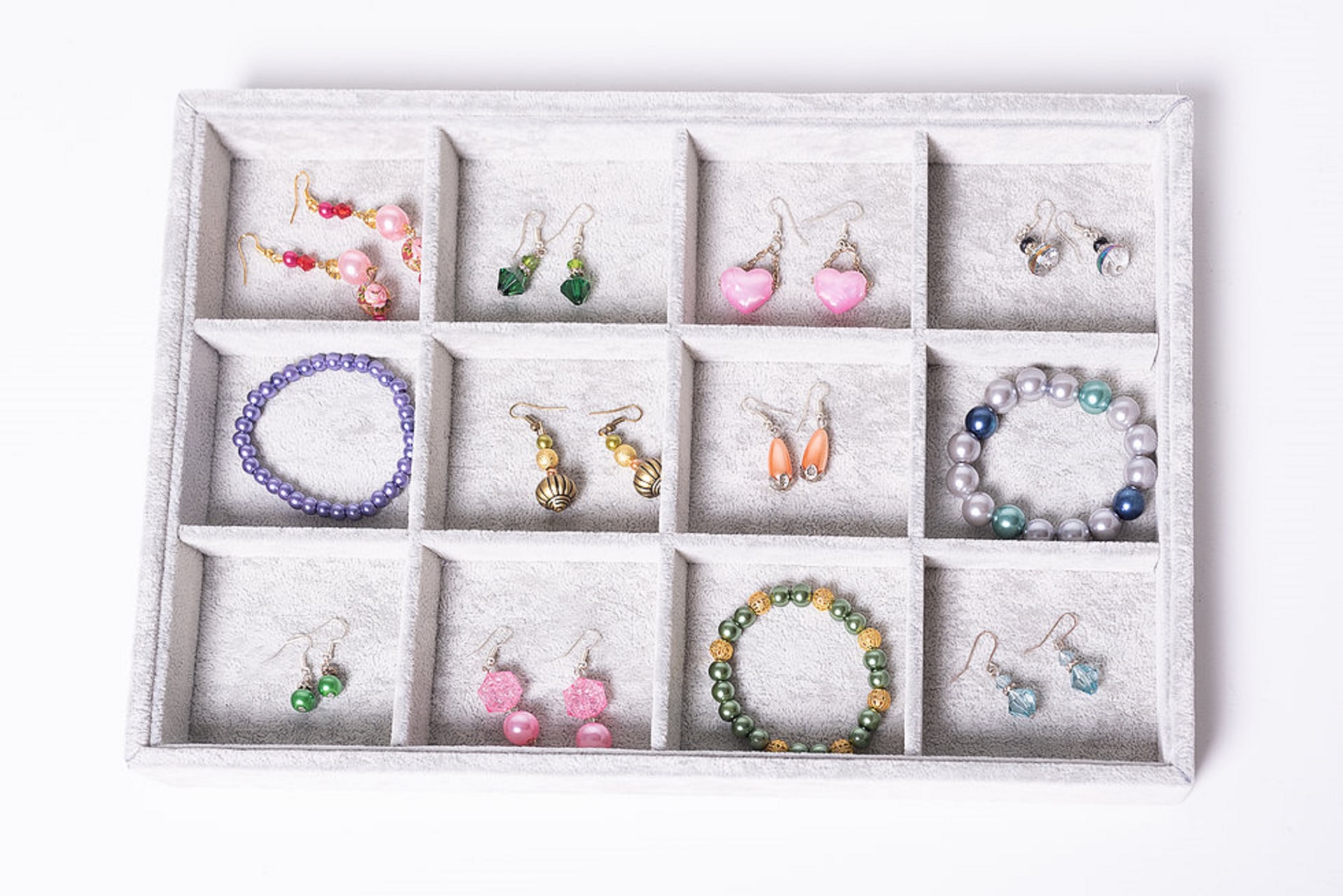

Let’s face it: everyone’s jewellery needs to be cleaned now and then. If you look at your own collection, you’ll probably find that your valuable jewellery is becoming tarnished or simply filthy. So, what’s the best way to clean your jewellery in a fast, convenient, and safe manner?
All accessories need some maintenance to keep it looking its best. If you’re not sure where to start, JD Institute has compiled a list of our top ten tips for cleaning and caring for gold, sterling silver, and gemstone jewellery:
It’s easy to overlook the fact that your jewellery needs cleaning, either because you wear it all the time and don’t notice the changes, or because it’s hidden away and you don’t look at it very much.
I recommend that you take a close look at your parts – particularly the most valuable ones – every 6-12 months and give them an objective evaluation. There’s a good chance that any or all of them might use a makeover, and sterling silver jewellery, in particular, is likely to be tarnished.
The good news is that most jewellery items are simple to clean. Continue reading to learn how.
This is the simplest cleaning move, but it is recommended for almost all jewellery. For several bits, you will find that this is all you need to do.
Use gentle liquid soap and warm water to clean your jewellery. Castile soap, woollens soap, or even plain hand soap without moisturisers or harsh chemicals should suffice. To get the grime out of crevices, use a cloth or a soft-bristled brush.
When it’s clean, be sure to dry it quickly and thoroughly.
If grime and dust are difficult to remove from intricate parts, consider purchasing a low-cost ultrasonic cleaner and following the manufacturer’s instructions.
Note that an ultrasonic cleaner will not remove tarnish, but it will work wonders on intricate parts with many crevices where dirt will collect and stick.
If your silver jewellery has blackened areas as part of the design, such as soft gemstones like lapis lazuli, turquoise, or pearls, avoid ultrasonic cleaning.
This method should be used with caution because it can damage some finishes and soft gemstones.
Sterling silver, in particular, tarnishes with time, but other precious metals, including lower carat gold, can do so as well. This is a common occurrence with metals, and the tarnish is easily removed from precious metals.
Use a precious metal polishing cloth, such as the professional quality version we have available online, to remove tarnish from your precious metal jewellery.
If you’re satisfied, clean and dry the piece to remove any chemical residue.
Silver dip can also be used to remove tarnish from sterling silver quickly and easily. It’s perfect for silver chains, which can be difficult to clean with only a polishing cloth.
Silver dip or anything similar should be available at your local supermarket, more extensive pharmacy, or hardware store.
Always follow the manufacturer’s instructions and clean and dry thoroughly.
To be healthy, avoid silver dip if your silver jewellery has blackened areas, such as soft gemstones like lapis lazuli, turquoise, or pearls. It may affect those finishes and gemstones.
Never use ‘old wives’ jewellery cleaning methods such as rubbing toothpaste or baking soda onto the hardware. Each time you do this, a small amount of metal is removed, which damages and depletes your valuable jewellery over time.
If your jewellery has a delicate finish, use care when using a polishing cloth, brush, or anything else that comes into contact with the metal (such as gilding, vermeil, plating or any patina or colouring).
It’s possible that too much passion for jewellery cleaning isn’t a positive thing!
If your necklace, like the forget-me-nots necklace, has silk thread, it can be washed in warm soapy water and rinsed.
The silk should dry straight whether you lay it flat or hang it up to dry. Otherwise, straighten it out with a silk setting iron.
Now that your jewellery is sparkling clean consider how you can better store it to prevent having to clean it again too quickly.
Precious metal jewellery should not be kept in a humid setting, such as the bathroom. Humidity hastens to tarnish, so it’s best to stop it. If you live in a humid area, you can take extra precautions and clean more often.
Precious metal jewellery should be kept away from open-air as far as possible. This will also help to prevent tarnish and keep dust at bay. If you can, keep it in a bag, small jewellery box, or something similar.
If you like to wear your jewellery on show, bear in mind that it will need to be cleaned more often.
If jewellery designing is a career path you wish to follow, education from a good institution becomes necessary. JD Institute Of Fashion Technology is one of the best institutes providing jewellery designing courses etc. With reasonable jewellery designing courses fee and an industry-based curriculum, the students are ready for the real world beforehand. Due to their exemplary contribution to education and record-breaking 99% placement rate, JD Institute has been awarded a various token of recognition such as the times’ power icon award, international glory award, leaders in education award and many more. JD Institute shares a vision of providing the best resource library, infrastructure, cutting-edge technology, etc. No external factor acts as a barrier between the students and their success. The right opportunity is waiting for you, Enroll now!